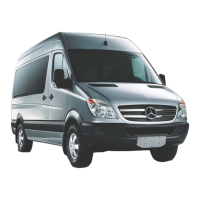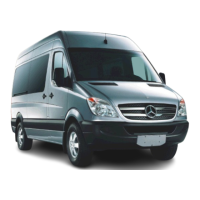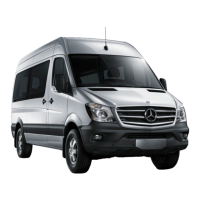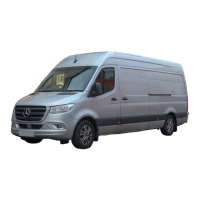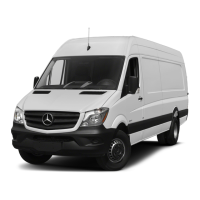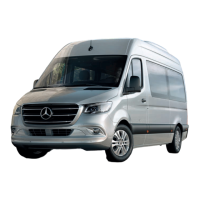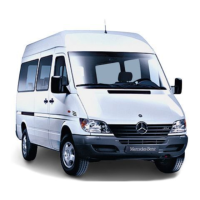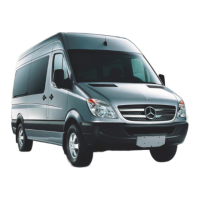card contains, in compact form,the mostimpor‐
tant information aboutyour vehicle e.g. therout‐
ing of electric cables.
Further information can be found at http://
www.mercedes-benz.de/qr-code.
Data storage
Electronic control units
Electronic control unitsare installed in your vehi‐
cle. Some of these arenecessaryfor thesafe
operation of your vehicle, while some assistyou
when driving (driver assistance systems). In addi‐
tion, your vehicle provides comfort and entertain‐
mentfunctions, whichare also made possible by
electronic controlunits.
The electronic control units containdatamemo‐
ries whichcan temporarily or permanently store
technicalinformation aboutthe vehicle's operat‐
ing state, component loads, maintenance require‐
ments and technicaleventsormalfunctions.
In general,this information documents thestate
of acomponent part, amodule, asystemorthe
surroundingssuchas:
R
operatingstatesofsystemcomponents (e.g.
fluid levels, batterystatus,tirepressure)
R
status messages concerningthe vehicle and
its individual components (e.g. number of
wheel revolutions/speed, deceleration, lateral
acceleration,displayofthe fastened seat
belts)
R
malfunctions or defects in important system
components (e.g. lights, brakes)
R
information on events leading to vehicle dam‐
age
R
system reactionsinspecial drivingsituations
(e.g. airbag deployment, intervention of sta‐
bilitycontrol systems)
R
ambient conditions (e.g. temperature, rain
sensor)
In addition to providing theactual controlunit
function,this dataassists themanufacturer in
detecting and rectifying malfunctions and opti‐
mizing vehicle functions. The majority of this data
is temporaryand is onlyprocessed in thevehicle
itself. Onlyasmall portion of thedataisstoredin
theevent or malfunction memory.
When your vehicle is serviced, technicaldata
from thevehicle can be read out by service net‐
work employees (e.g. workshops, manufacturers)
or thirdparties (e.g. breakdown services). Serv‐
ices include repair services, maintenancepro‐
cesses, warrantyclaimsand quality assurance
measures, forexample. The read out is per‐
formed via thelegally prescribed portfor the
diagnostics connection in thevehicle. The
respectiveservice networklocations or thirdpar‐
ties collect, processand use this data. They
document technicalstatuses of thevehicle,
assistinfinding malfunctions andimproving qual‐
ity and aretransmitted to themanufacturer,if
necessary. Furthermore, themanufacturer is sub‐
ject to product liability.For this, themanufacturer
requires technicaldatafromvehicles.
Malfunction memories in thevehicle can be reset
by aserviceoutletaspartofrepair or mainte‐
nancework.
Depending on theselected equipment, youcan
importdataintovehicle convenience and info‐
tainment functionsyourself.
This includes, forexample:
R
multimediadatasuchasmusic,films or pho‐
tosfor playbackinanintegratedmultimedia
system
R
address book datafor use in connection with
an integrated hands-free system or an inte‐
grated navigation system
R
entered navigation destinations
R
dataabout theuse of Internetservices
This datacan be savedlocallyinthe vehicle or it
is located on adevice whichyou have connected
to thevehicle (e.g. smartphone, USB flash drive
or MP3 player). If this dataisstoredinthe vehi‐
cle, youcan delete it at anytime. This datais
sent to thirdparties onlyatyour request, particu‐
larly when youuse online services in accordance
withthe settings that youhave selected.
Youcan storeorchangeconvenience settings/
individualization in thevehicle at anytime.
Depending on theequipment, this includes, for
example:
R
seat and steering wheel position settings
R
suspension and climatecontrolsettings
R
Individualization suchasinterior lighting
If your vehicle is accordingly equipped,you can
connectyour smartphone or another mobile end
device to thevehicle. Youcan control this by
means of thecontrolelements integrated in the
vehicle. Images and audio from thesmartphone
can be output via themultimedia system. Certain
26
General notes
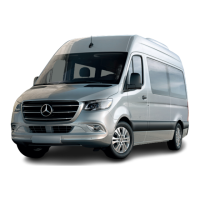
